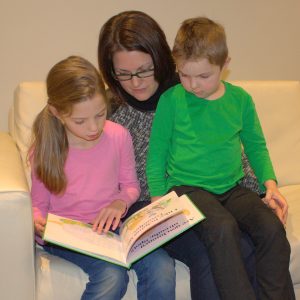 The theme for this years Book Week is "Australia, Story Country". Stories play and important part in child's learning both at school in terms of learning literacy and at home in terms of learning language skills.
The theme for this years Book Week is "Australia, Story Country". Stories play and important part in child's learning both at school in terms of learning literacy and at home in terms of learning language skills.
So why are stories so important? The ability to retell stories ties in closely with the ability to write well later on. It also relates to a child’s reading and comprehension skills. Fluent reading relies on predicting skills so the more familiar a child is with the language and structure of stories the quicker and easier a child will be able to read and understand written stories.
Listening to stories links together spoken and written language. Speech and writing have different structures and rules. Hearing stories read helps children learn these differences. Retelling stories allows children to practice forming written language structures even before they can write.
Some of the differences between written and spoken language are:
- written language uses more complete sentences
- written language provides more detail and context, because the reader cannot see what the writer is experiencing
- written language needs referencing of information such as if a person is talking or thinking “he said” or “thought the girl” is used to reference the speech or thoughts
- written language has an overall structure, which changes depending on the type of text such as story, recount, argument etc.
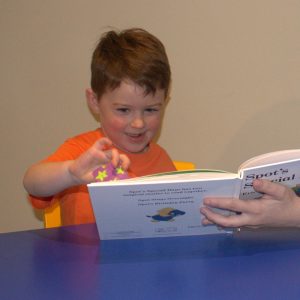 The structure of stories includes:
The structure of stories includes:
- A beginning with when, who and where information e.g. One day (when) a boy (who) went to the beach (where)
- A middle section which contains one or more problems which the characters try to solve. The story is about the actions of the characters trying to solve the problem and usually includes the feelings of the characters too.
- An ending which solves the problem and often includes how the characters are feeling when it is solved.
- Stories are usually told in past tense. Conjunctions (joining words) provide important information about how the different parts of the story tie together in time (next, suddenly, later, before that) and cause effect (because, even though, however).
Stories for different ages: Children develop their ability to understand and tell stories over time and with experience. Here are the types of stories suitable for different age groups:
Isolated Description: Simple stories for two year olds
The story has related statements about particular objects, characters or actions. For example, a series of ‘I like’ sentences. The statements are not related by time or consequences.
Action Sequence: Action stories for preschoolers
The story tells a series of things that happen over time. For example a trip to the zoo looking at different animals. There are no cause-effect relationships between the parts of the story.
Reactive Sequence: Cause and effect stories for children beginning school
Things happen in sequence and one thing causes another to happen. The story includes feelings and reactions from the characters.
 Narratives: True “stories” for school aged children
Narratives: True “stories” for school aged children
The story centres around a problem and the characters reactions, plans and attempts to solve the problem. There may be a series of attempts and a series of problems that occur and are solved at the end.
To develop your child’s ability to tell stories:
1. Firstly choose a picture book with clear pictures that represent the story.
2. Next take time to talk to your child about what the story involves:
- Who are the characters?
- What is happening?
- Why is it happening?
- How are the characters feeling?
3. Then tell the story to your child. You may choose to read the words or tell your own story. Try to include the story parts listed above.
4. Next encourage your child to tell the story from the pictures.
- Encourage them to begin with a beginning structure.
- If they use present tense repeat this back as past tense e.g. “the boy is eating the apple” becomes “the boy ate the apple”.
- Fill in parts of the story using joining words to link actions if your child does not. Use “and then” to begin and use more complex joining words (so, but because, later, suddenly) as your child progresses.
- Help them to reference direct speech if they forget. e.g.: “said the boy”
- Encourage your child to use a beginning and ending structure.
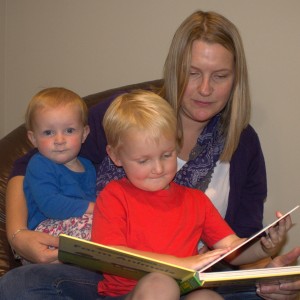 Ideas for practising storytelling:
Ideas for practising storytelling:
Make it a part of your routine to read to your child each night and get them to tell one story to you from the pictures of a favourite book.
Tell someone else. Read the story to your child then ask them to tell it to someone else, a family member, younger sibling or even a teddy
Play schools. Children love to line up dolls and teddies, sit on a chair, hold a book and be the teacher, telling the story.
Sequence stories. Scan and print some pictures from familiar stories, or buy some cheap or second fairytale books and cut up the pictures. Help your child to put the pictures in order and tell the story.
Make your own stories. Take some photos on a family outing, print and slip them into a mini photo album and help your child make up a story to go with the pictures. Share your stories with family and friends.
Be the narrator. Try making a slide show on the computer or ipad using your own photos and recording your child’s voice telling the story.
Act it out. Use dolls, toy figurines, or plastic animals to act out a familiar story. Tell the story as your child acts it out, remembering to use the story structures discussed, then your child can tell as you act it out. Try using dress ups and letting your child be the character.
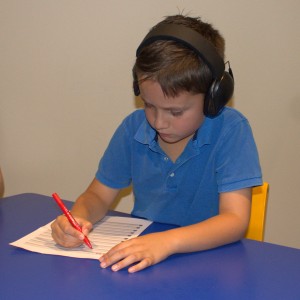 Stories play an important part in a child’s literacy development. As well as telling stories, writing stories is an important skill for school age children.
Stories play an important part in a child’s literacy development. As well as telling stories, writing stories is an important skill for school age children.
Children need to understand about the structure of stories and the difference between written and oral language. The more familiar your child is with these ideas, the better stories they will write. Many children develop this understanding by listening to stories when they are young and reading stories when they are older but some children need extra help.
To help your child understand the structure of stories and the characteristics of written language try these ideas:
Encourage your child to read widely. Offer books about your child’s interests but also offer good quality, well written books. Ask your local or school librarian for good books suited to your child’s age, ability level and interest. If you child does not like to read, read aloud to them. Children can’t read aloud at the level of their understanding until around ten years of age so keep reading to them and read them books which are harder than the ones they read themselves. Try books on tape or CD too.
Talk about the structure of stories as you read together. You can also talk about the structure of stories in things like movies. See the notes above.
Talk about the differences between written and spoken language and look for examples as you read. Perhaps compare a book and a movie of the same story. See the notes above for some of the differences.
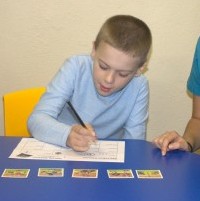 To help your child to write stories try these ideas:
To help your child to write stories try these ideas:
Use a story map to plan the story first. Your child probably uses these in class and your child’s teacher may be able to give you a copy of the ones they typically use. You can also download a variety of free planners for different texts from Our website.
Use a visual to help your child generate ideas. This might be a picture or series of pictures, a video clip, a picture book, an interesting photo or cartoon. Wordless story books work well and are available at libraries. Your child could draw a picture or take a photo themselves to help them think of ideas.
Try talking through your child’s story first. Put the ideas on a story map as you discuss them. Ask your child to tell you the story before they begin to write. Perhaps record the story as you go. Most mobile phones have a voice recording function.
Help your child to brainstorm, plan, draft and edit their story. Brainstorm ideas about the topic first. Write down all the ideas until you can’t think of any more then mark the ones you like the best. Next put the ideas onto a story map and fill in the gaps with extra information. Draft the story. Don’t be too fussy at this stage, rather try to keep the ideas flowing. Next read your draft aloud together as you edit and make changes. This helps your child hear any bits that don’t make sense and any mistakes with grammar. Remember to edit for meaning as well as grammar, spelling and punctuation. Does it make sense? Does it sound good? Is there a better or more interesting word that could be used? Are there a range of different sentences rather than lots of sentences that are similar? Can you add some extra descriptive words or phrases to make it “sparkle”?
Present your story in an interesting way and share it with others. Try a voice recording; a video of your child reading their story; type, illustrate and print it with a computer; make a power point display.
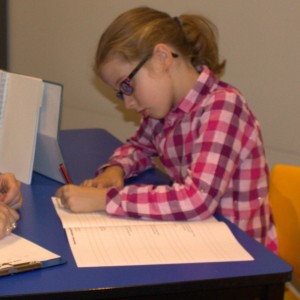 To encourage reluctant writers:
To encourage reluctant writers:
- use topics around your child’s interests such as favourite movie characters or sporting stars, topics such as space, dinosaurs, superheroes…
- use your child’s real life experiences and add a little imagination “remember when your went fishing with Dad, lets pretend you caught a whale”.
- break it into manageable steps, “let’s just write the first three sentences”
- don’t start with a blank page, use the story maps and visuals discussed above
- reduce the amount of handwriting needed. Perhaps take turns to write one line each or let your child dictate the words and you type or write them down.
- use a variety of interesting ways to present stories as listed above
- use literacy aides such as frequent word lists, spell checkers and word processors to help your child. You child’s teacher may be able to suggest suitable software to help your child write and spell if this is an area of difficulty.
- publish, display and share your child’s work
To help parents and teachers support children to develop literacy skills Talking Matters has developed a starting school pack which can be downloaded for free from the front page of our website.
There is also a large amount of information about language and literacy in the download section of the website.
If you are concerned about your child’s development including speech, language, play skills, social communication skills, social skills or learning check our website to see how Talking Matters may be able to help. We offer individual assessment and therapy as well as a range of group programs. For more ideas and resources check the resources section on our website and our extensive Pinterest page. Like us on Facebook and follow us on Twitter so you don’t miss out on what’s happening.
We hope you enjoy sharing stories with your children
Related Blog Posts
If you liked this post you may also like:
Top literacy ideas
10 uses for Xmas Lego!
Pronouns and plurals
Beginning questions



